#328 Tomorrow's picture: May 12, 1996
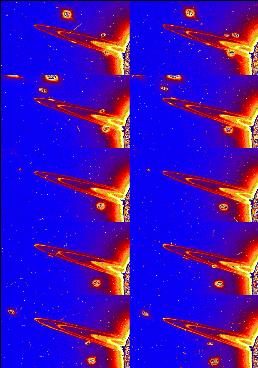
“These five pairs of Hubble Space Telescope images track some of Saturn's moons as they orbit the ringed planet. A pair of images was taken every 97 minutes on November 21, 1995 with the Wide Field Planetary Camera-2, the normally bright ring system appearing nearly edge-on. In the top pair, the large bright moon Dione hangs above center while the smaller moons Pandora, Prometheus, and Mimas (top right image) appear near the planet's disk close to the outer ring. By the second and third pair of images, moons Rhea and Epimetheus have joined the dance. During the Saturn ring plane crossings, the reduction in light from the edge-on rings provided an opportunity for astronomer's to explore Saturn's complex moon system and search for elusive undiscovered satellites."
Copyright: Public domain
#329 Tomorrow's picture: May 13, 1996
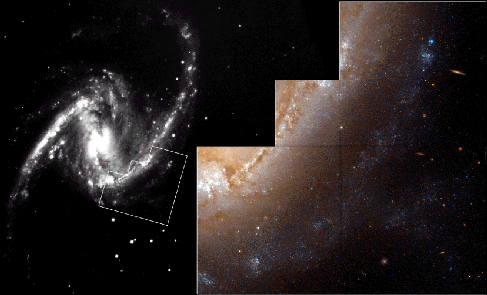
“Our Universe is expanding. Distant galaxies appear to recede from us at ever-increasing speeds. What is the rate of expansion? How long has it been expanding? What will be its ultimate fate? Two groups of astronomers are searching vigorously for answers to these fundamental questions using the Hubble Space Telescope (HST). The teams have recently announced conflicting measurements of the Hubble constant, a number which represents the expansion rate of the Universe. Astronomer Wendy Freedman and her collaborators have used pulsating stars called Cepheids to measure the distance to galaxies like the Fornax cluster barred spiral galaxy NGC1365 shown above. The ground based photo (left) shows an inset locating the HST image (right) which Freedman and team have used to identify some 50 Cepheids. Their distance and velocity measurements determine Hubble's constant to be about 80 kilometers per second per megaparsec which means that galaxies one megaparsec (3 million lightyears) distant appear to recede from us at a speed of 80 kilometers per second. Conflicting results indicating a substantially slower expansion rate (smaller Hubble constant) are being reported by astronomer Allan Sandage and collaborators. The value of Hubble's constant was recently the subject of a popular public debate titled "The Scale of the Universe 1996: The Value of Hubble's Constant"."
Copyright: Public domain
#330 Tomorrow's picture: May 14, 1996
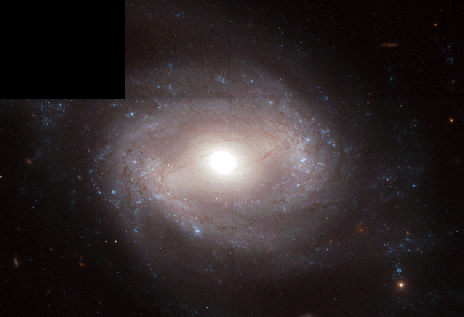
“In this century, the discovery that the Universe is expanding has produced a revolution in human thought about the Cosmos. American astronomer Edwin Hubble played a major role in this profound discovery, coining the "Hubble constant". This single number describes the rate of the cosmic expansion, relating the apparent recession velocities of external galaxies to their distance. Two groups of astronomers trying to measure this fundamental constant using the Hubble Space Telescope (HST) are continuing to report conflicting results. One group, led by astronomer Allan Sandage, measures distances to galaxies using pulsating Cepheid variable stars and supernovae observed in galaxies like the Virgo Cluster spiral galaxy, NGC4639, shown above. This galaxy is the most distant one to which Cepheid-based determinations have been made and was also the site of a well-studied 1990 supernova. Their results favor a relatively small Hubble constant (slow expansion rate) of about 55 kilometers per second per megaparsec which means that galaxies one megaparsec (3 million lightyears) distant appear to recede from us at a speed of 55 kilometers per second. A substantially faster expansion rate (larger Hubble constant) is being reported by astronomer Wendy Freedman and collaborators, also based on HST data. The value of Hubble's constant was recently the subject of a popular public debate titled "The Scale of the Universe 1996: The Value of Hubble's Constant"."
Copyright: Public domain
#331 Tomorrow's picture: May 15, 1996
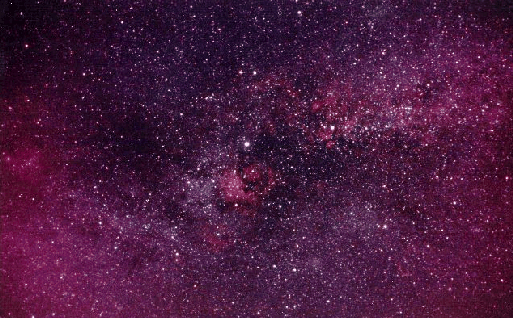
“This beautiful image of the sky near the bright star Deneb (just above center) reveals the stars, nebulae, and dark clouds along the plane of our Milky Way Galaxy as seen from the northern hemisphere (near Columbia Missouri, USA). Just below Deneb lies the suggestively shaped North America emission nebula. Deneb is the brightest star in the constellation Cygnus, located in the tail of this celestial swan. Cygnus contains the asterism known as the Northern Cross and marks one side of the "Great Rift" in the Milky Way, a series of dark obscuring dust clouds which stretches on through the constellation Sagittarius. Deneb defines the top of the Northern Cross while the body of the cross extends past the upper right corner of the picture. Cygnus also harbors the most famous candidate for a black hole in our galaxy, Cygnus X-1."
Copyright: Andy Steere
#332 Tomorrow's picture: May 16, 1996
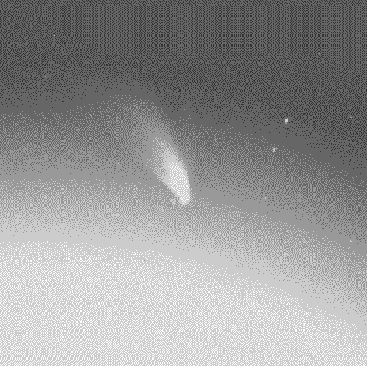
“On May 1, Comet Hyakutake made its closest approach to the Sun. During this time it was not possible to view the comet with most astronomical instruments because of the brightness of the nearby Sun. But the orbiting Solar and Heliospheric Observatory (SOHO) spacecraft contains telescopes meant to look directly at the Sun and so were able to track the comet during this crucial time. This picture, taken May 2, shows the tails of Comet Hyakutake pointing away from the Sun, as expected. During its closest approach, Comet Hyakutake passed inside the orbit of Mercury. Comet Hyakutake will not return to the inner Solar System for another 14,000 years."
Copyright: Public domain
#333 Tomorrow's picture: May 17, 1996
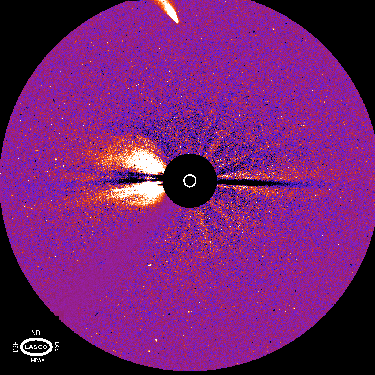
“A rare coincidence was recently captured by the orbiting SOHO spacecraft. During the closest approach to the Sun of Comet Hyakutake on May 1, SOHO photographed the comet. By accident -- during the time this photograph was being taken -- a solar flare was being ejected from the Sun. Therefore, at the top of this false-color picture, Comet Hyakutake is visible, while emission to the left of the Sun is a solar flare. The Sun, at the center of the picture, was blocked by an artificial occulter in the LASCO telescope, allowing objects much dimmer than the Sun to be observed. SOHO was launched in December of 1995 and contains many instruments which study the Sun."
Copyright: Public domain
#334 Tomorrow's picture: May 18, 1996
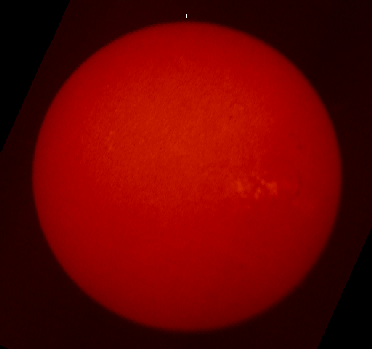
“Our Sun shows a different face every day. The above picture was taken on May 15, but a similar picture of the Sun actually taken today can be found here. The above picture was taken in red light and so is shown in red. The bright spots to the right of center are active regions known as plages. Currently, the Sun is showing very few active regions or sunspots, and is considered to be in a solar minimum. Solar activity will pick up over the next six years until a "solar maximum" is reached. The Sun goes through this cycle of maxima and minima every 11 years. Sol, our Sun, is hundreds of times more massive than all the planets in the Solar System combined. However, the Sun itself contains only a small amount of the total angular momentum of the Solar System."
Copyright: Public domain
#335 Tomorrow's picture: May 19, 1996
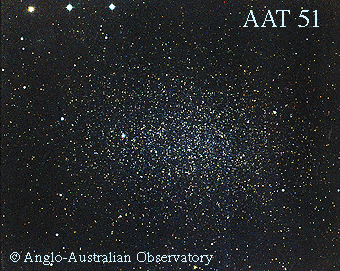
“Leo I is a dwarf spheroidal galaxy in the Local Group of galaxies dominated by our Milky Way Galaxy and M31. Leo I is thought to be the most distant of the eleven known small satellite galaxies orbiting our Milky Way Galaxy. Besides the LMC and the SMC, all Milky Way satellite galaxies are small, dim, dwarf spheroidals, including the closest galaxy - the Sagittarius Dwarf. Leo I is most distant than most of them, thought to be about 250 kpc away. Analysis of stars in Leo I show it contains many stars only about 3 billion years old - much younger than in most galaxies."
Copyright: Anglo-Australian Telescope
Board
#336 Tomorrow's picture: May 20, 1996
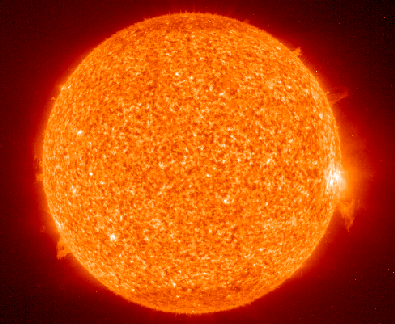
“Above is an image of the relatively quiet Sun made on May 18 in light emitted by ionized Helium atoms in the Solar chromosphere. Helium was first discovered in the Sun in 1868, its name fittingly derived from from the Greek word Helios, meaning Sun. Credit for the discovery goes to astronomer Joseph Lockyer. Lockyer relied on a recently developed technique of spectroscopy, dissecting sunlight into a spectrum, and the idea that each element produces a characteristic spectral pattern of bright lines. He noticed a yellow line in a solar spectrum made during an eclipse which could not be accounted for by elements known on Earth. Almost 27 years later Helium was finally discovered on Earth when the spectrum of a Helium bearing mineral of Uranium provided an exact match to the previously detected element of the Sun. Helium is now known to be the second most abundant element (after Hydrogen) in the Universe."
Copyright: Public domain
#337 Tomorrow's picture: May 21, 1996
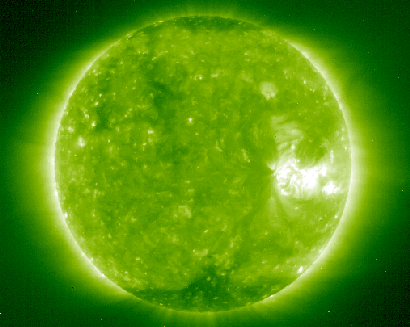
“The ultraviolet light emitted by eleven times ionized iron at temperatures over 2 million degrees Farenheit was used to record the above picture of the Sun on May 16. The image was made by the EIT camera onboard the SOHO spacecraft, a space observatory which can continuously observe the Sun. Eleven times ionized iron is atomic iron with eleven of its electrons stripped away. Here the electrons are stripped by the frantic collisions with other atoms and electrons which occur at the extreme temperatures in the Solar Corona. Since electrons are negatively charged, the resulting ionized iron atom is highly positively charged. Astronomer's "shorthand" for eleven times ionized iron is written "Fe XII", the chemical symbol for iron followed by a Roman numeral 12 (Fe I is neutral iron)."
Copyright: Public domain
Upvote! Resteem! Comment! As you like it! Thank you for attention!
#330 This is original galaxy which was used in early Samsung Galaxy wallpapers :)
Downvoting a post can decrease pending rewards and make it less visible. Common reasons:
Submit